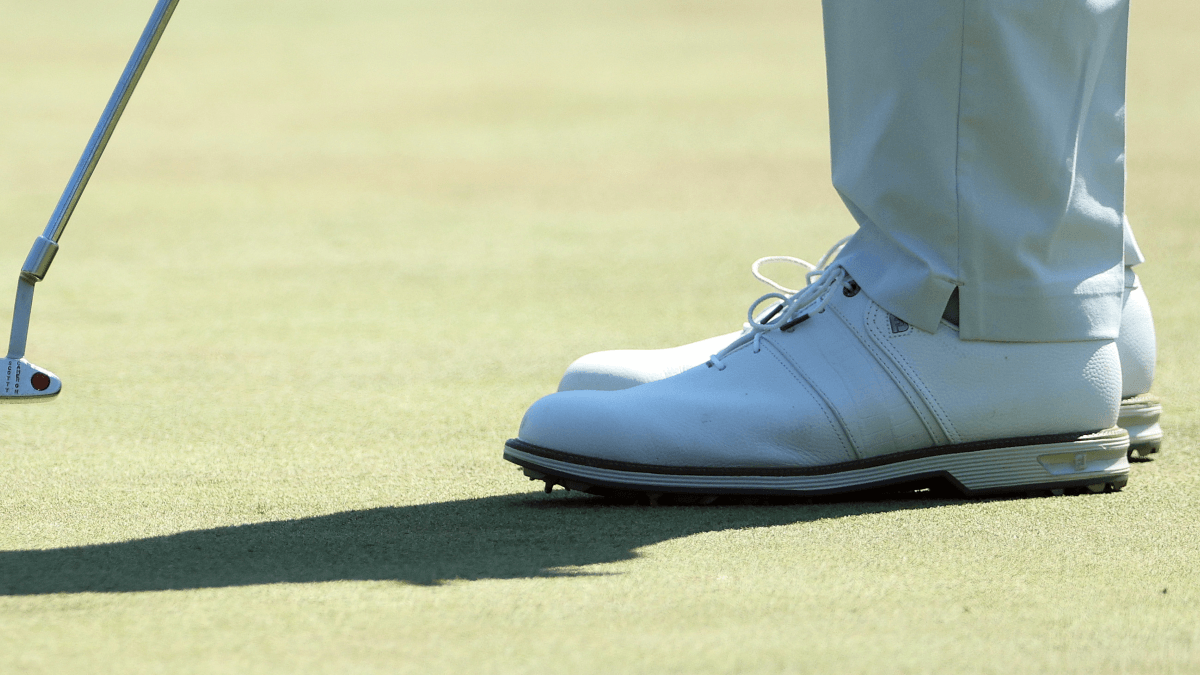There’s only one explanation for Tiger Woods walking around Augusta National in non-Nike shoes: he’s unhappy with the Swoosh.
The golf world was in turmoil Sunday and again Monday when Woods showed up wearing a pair of black FootJoy spikes.
The most common speculation? He needed something more comfortable after his accident.
But after reporting on sports business for 22 years, this doesn’t pass my sniff test.
If Tiger needed a special orthotic to make his foot feel differently in the shoe, Nike would have it. If Tiger liked another brand, Nike could have worked with him as well. They could have easily painted over a swoosh and probably could have gotten away with it.
Painting tennis rackets and shoes happens more often than you might think. NFL players have a deal with adidas and love their Nikes. The player may be wearing a Nike shoe, but it can’t be seen from a distance.
Which is why showing up in an FJ-branded shoe seems to suggest Tiger wasn’t interested in working with Nike.
It wouldn’t be the first time Tiger had flexed his muscles in these trade positions.
In 2015, despite the release of new spikes, Woods wore older versions on the course. At the time, Nike said its recent swing changes led it to use an older model. Nike used a similar refrain in a statement on Sunday, saying they “will work with him to meet his new needs.”
But anyone who knows the business knows that if Woods needed something, it would have been voiced and corrected long before he hit the course. If they couldn’t make him a new peak, they could have tricked him. The only way Tiger is dating FootJoy branded shoes is if Tiger wants to go out and wear FootJoy branded shoes.
And the fact that Tiger left the course in white FootJoys on Monday after the scene that happened while he was in black FootJoys on Sunday shows you that nothing was nipped in the bud.
Why is this a big deal? Because when Tiger misses a swoosh on any part of his body, it looks fake. Aside from Michael Jordan, Tiger has done more for Nike than any other athlete. He and Nike are inextricable.
When Phil Knight signed Woods to a $40 million deal in 1996, the world couldn’t believe it. However, in 2000, when the price was $100 million, no one flinched. Two more transactions followed. The last reportedly came in 2013 for $200 million, although no duration was reported. The deals were almost certainly changed in some way due to his accident, infidelity and breakup in 2008, followed by his lack of success on the course as well as the breakup required by his last accident.
Details have not been shared as to when Tiger’s last Nike contract will end, but unlike LeBron James, he is not on a lifetime deal. All the more reason—since your leverage wanes in the twilight of your career—to bend when you can.
Could it cost Tiger for breach of contract? May be. But Nike wouldn’t do anything to turn the clock back unless executives thought he was gone forever.
How would you rate this article?

